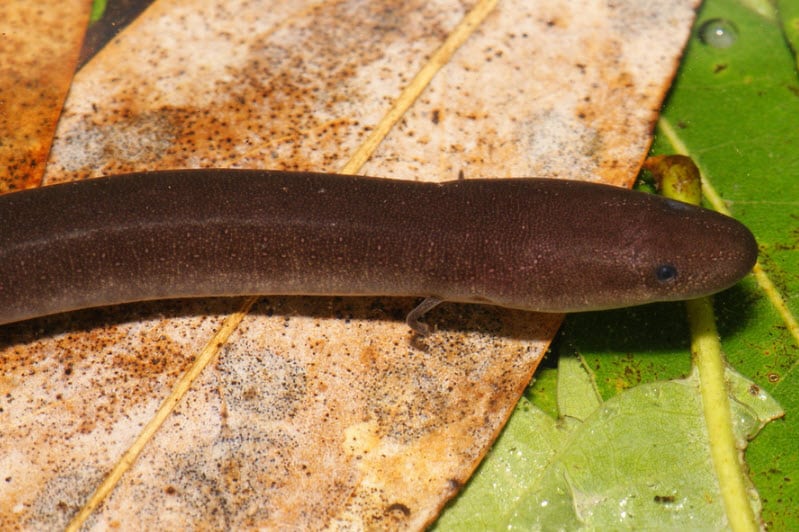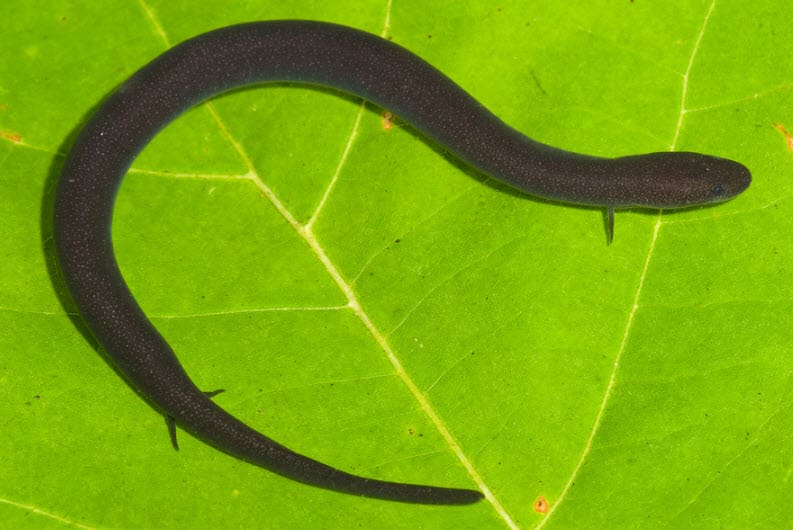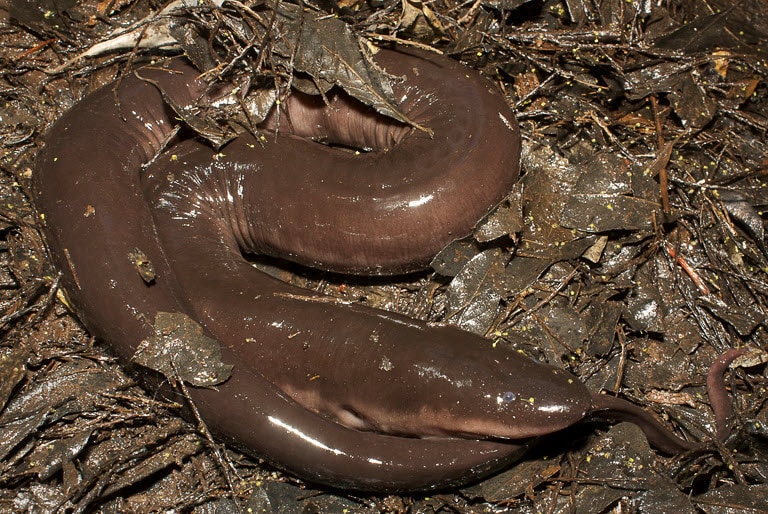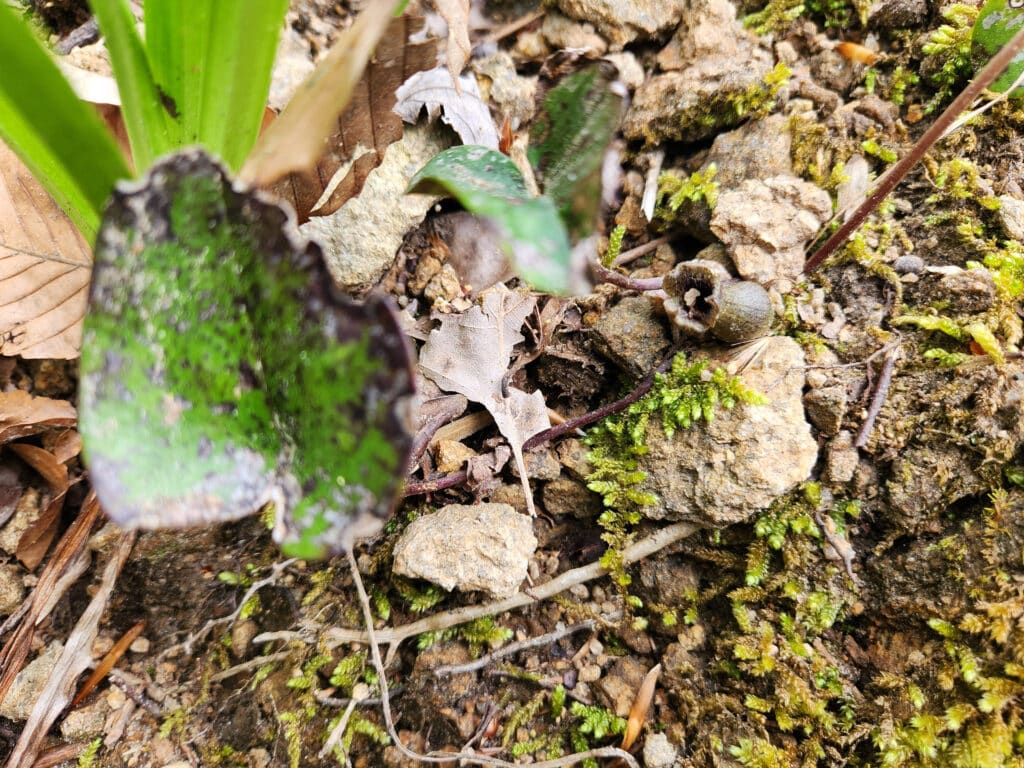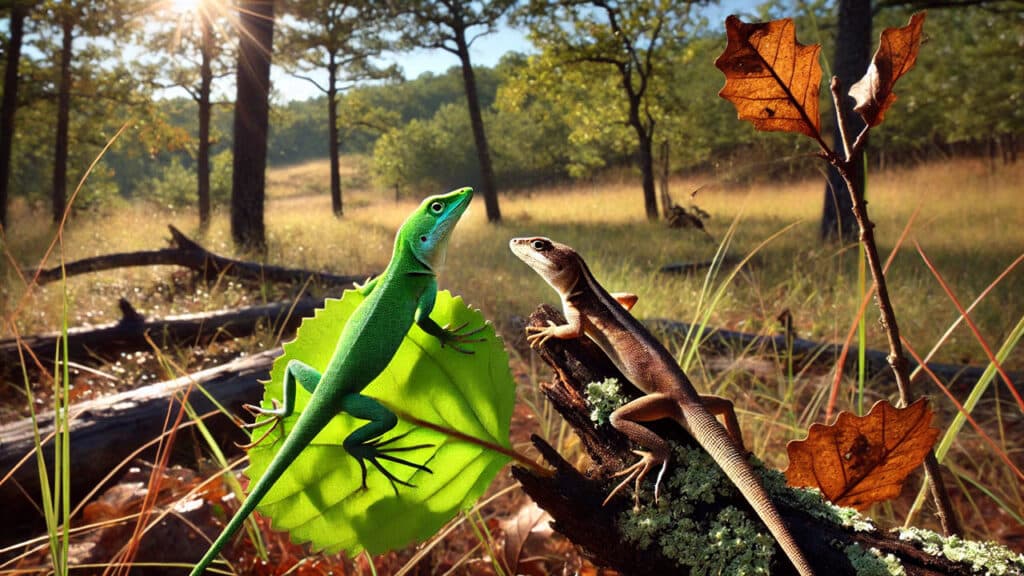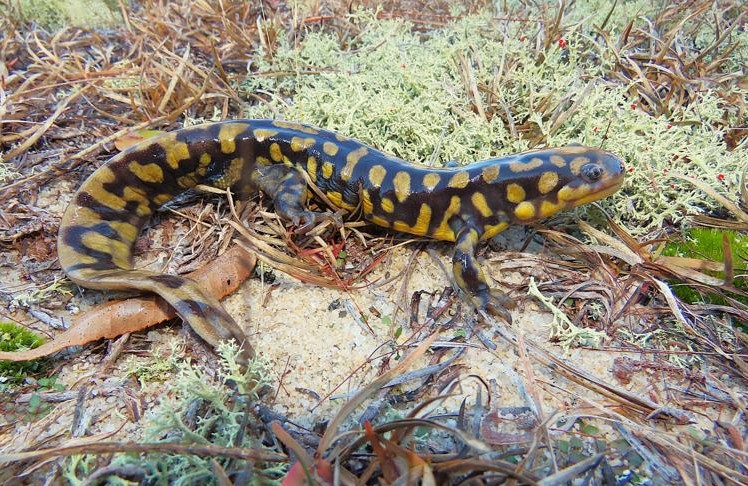
Ambystoma tigrinum, Eastern Tiger Salamander. Photograph courtesy of Jeff Beane and The Pilot.
As you, dear readers, have learned from my blogs over the past few months, there are many weird and wonderful creatures that call North Carolina home. Today I will be discussing yet another member of that club, the Eastern Tiger Salamander. One of the wonderfully weird things about our state is that it is home to more salamander species than any other place in world. What makes this particular salamander stand out from the pack, you may be wondering? Well, the Eastern Tiger Salamander, or Ambystoma tigrinum, is the largest terrestrial salamander in the world. This heavy-bodied amphibian can come in base shades of dark brown or black, with large, irregular yellow, yellow-brown, or olive spots that more closely resemble blotchy stripes, hence its name. Eastern Tiger Salamanders can reach lengths of 11-12 inches, though there have been reports of some reaching 13 inches in length.
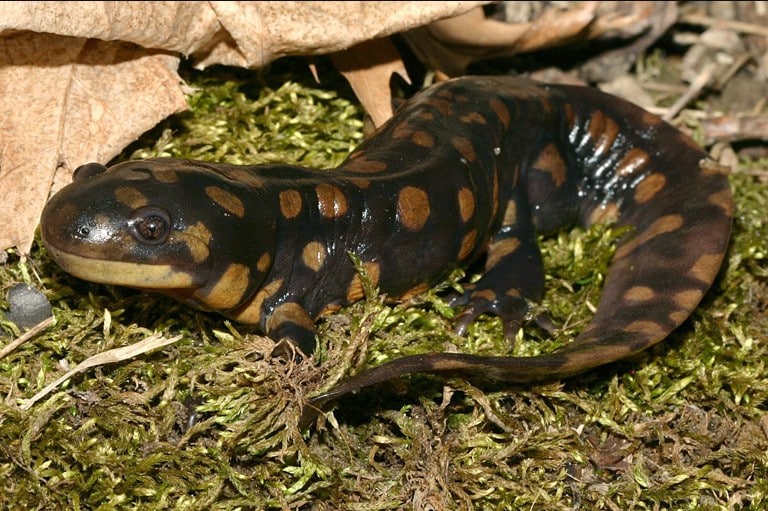
Ambystoma tigrinum, Eastern Tiger Salamander. Photo courtesy of Todd Pierson and Herps of NC.
In North Carolina, these salamanders are rarely seen, as they spend most of their time in burrows they dig themselves in the coastal plain and portions of the piedmont region. You may be fortunate enough to see one during their breeding season during the fall and winter months. Males emerge from their burrows before the females, heading to small, fishless bodies of water, such as vernal pools and small ponds. Females lay egg clusters consisting of anywhere from 15 to 200 eggs, attaching the gelatinous egg mass to submerged sticks. Once they hatch, the larval form feed on aquatic invertebrates and other amphibian larvae. In anywhere from 10 weeks to 6 months, the Eastern Tiger Salamander larvae metamorphose into the adult form.
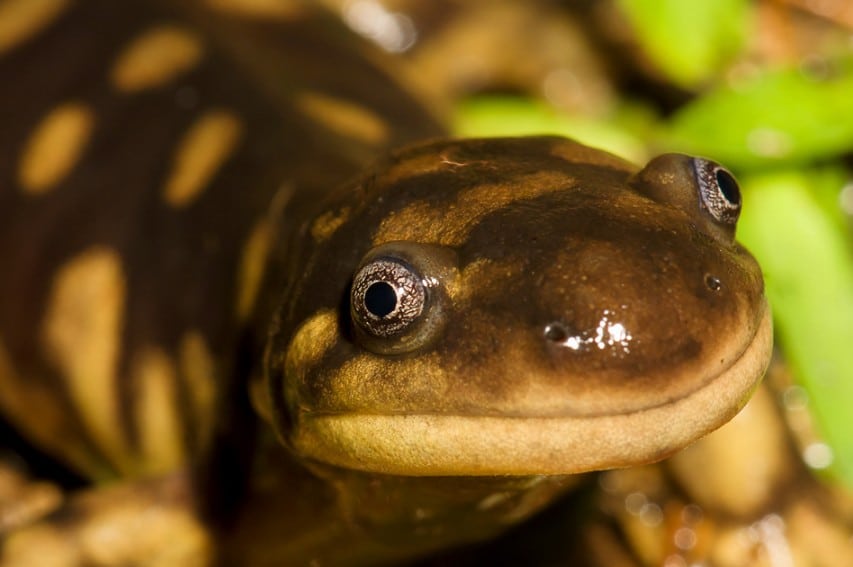
Ambystoma tigrinum, Eastern Tiger Salamander. Photo courtesy of Kevin Stohlgren and Herps of NC.
Adult Eastern Tiger Salamanders are predators, and they will eat anything they can catch and swallow. Their diet ranges from insects to crayfish, other salamanders, and even small mammals, such as mice and shrews. While being poached for the pet trade has had its negative effects on their population, habitat loss is the primary reason for their population decline. The pine savanna habitat they rely on for soft, sandy soil for burrows and shallow ponds for breeding has decreased in acreage due to the clearing of land for farms. However, there is good news to be had for these weird and wonderful salamanders. The North Carolina Wildlife Resources Commission has been steadily working to restore and manage isolated wetlands throughout this species’ historic range. Just two weeks ago staff from the NC Zoo and the Three Rivers Land Trust rescued egg masses from a pond at risk of drying up. The eggs were taken to the zoo, where they will be cared for until the young salamanders are strong enough to be released back into the wild. So the next time you stumble across a small wetland habitat in the coastal plain of North Carolina, take a closer look. You might just catch a glimpse of an Eastern Tiger Salamander.







